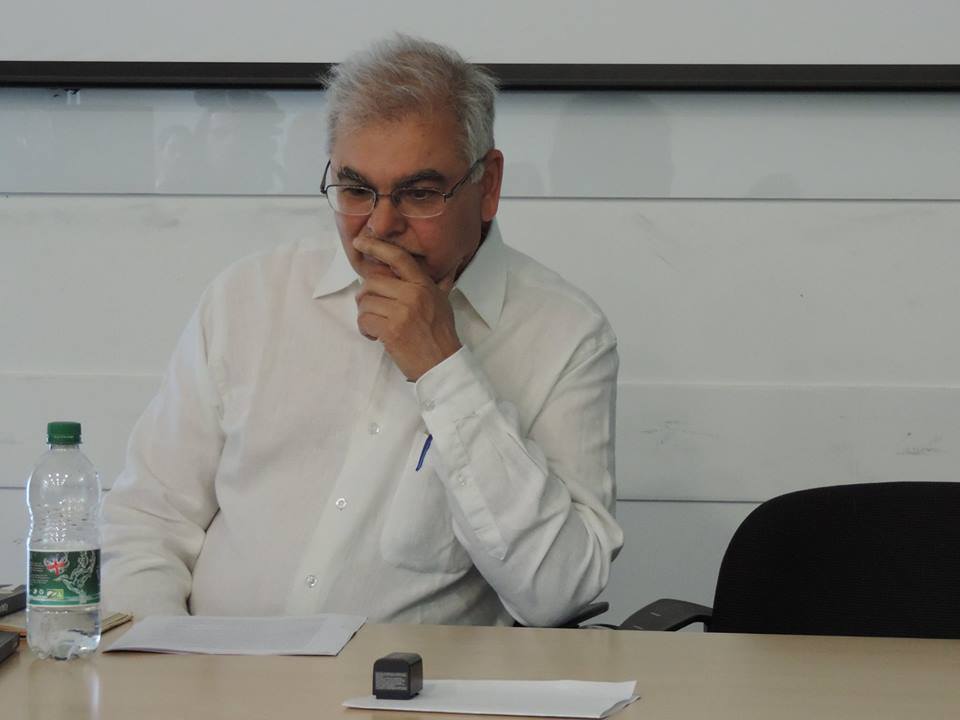Amarjit Singh
[Excerpt from the talk given at SOAS event of the launch of Hatred in the belly: Politics behind the appropriation of Dr Ambedkar’s writings]
 1. Thank you for coming. Since I am not a scholar, but an activist, I am going to be direct.
1. Thank you for coming. Since I am not a scholar, but an activist, I am going to be direct.
2. First couple of points of information: Columbia University had a pop up annotated version of Annihilation of Caste on the website for nearly a decade. These popups explain Indian terms in their historical settings.
3. Arundhati Roy claims that some Dalit leaders actually support her in what she says.
4. Udit Raj, a Dalit politician felt that Gandhi wanted to remove untouchability but retain caste. How can untouchability be removed without annihilating caste was not explained by Udit Raj. Was Ambedkar wrong in this instance? Udit Raj should have been clear in this.
5. Kancha Illiah a Bahujan intellectual also felt that The Doctor and the Saint was good in part, as it linked current Dalit issues with Ambedkar’s historical speech. But these added issues were rather selective, missing the main question raised in the original AOC thus forming a false impression. I will return to this point later at the end of my speech.
6. Arundhati Roy writes “Democracy has not eradicated caste. It has entrenched and modernised it. That is why it is time to read Ambedkar.” But caste and the Indian version of democracy in practice are antithetical. Like many left intellectuals in India such as D D Kosambi, Arundhati Roy was perhaps expecting the Indian version of democracy to somehow eradicate caste. When it did not, Ambedkar suddenly became a solution. He was evidently not a solution previously.
7. There is no doubt that Arundhati Roy’s book does attempt to appropriate Ambedkar for her own interests but as other Dalit intellectuals such as Bojja Tharakkam have pointed out, neither Lokayats, nor Buddhism nor Ambedkar can be appropriated, by Hindutva elements – However attack, eating up and digesting it followed by appropriation by socialist elements is far more dangerous than appropriation by Vedic Brahmins.
8. The question of Adivasis is related to India’s caste system, historical uneven development and internal colonialism. But, as Roy did, why accuse Ambedkar of suffering from his own version of Brahmanism on this question unless you have an agenda?
9. By pitting Gandhi’s village republic Utopia (which Ambedkar called ‘dens of ignorance’) against Ambedkar’s allegedly polar opposite city based Utopia she twists the debate and declares that Gandhi was right after all, as industrialisation has led to all manner of ills destroying Adivasi habitats. She has obviously not read about or done research on Ravidas’s Begumpura in a city in this world, Satnamis battle with the forces of Aurangzeb (a failed Utopia) and Guru Gobind Singh’s ‘Banda’ Bahadur and his Utopia in the countryside which Banda called Sataya Yug, which was Ravidas’s Begumpura but in the villages, because Banda had elevated Dalits with merit to the rulers of the land, in practice.
10. Arundhati Roy’s asymmetrical criticism of Gandhi and Ambedkar benefits her Left friends the most. This, in my personal opinion is the biggest criticism of her ‘book’. It reeks of what I would call oblique dishonesty which is much more dangerous than straightforward dishonesty. If she thought that Gandhi was right and Ambedkar was wrong on Utopia, she should have said so and not heap blame for Adivasi problems and problems of industrialisation at Dr Ambedkar’s doorstep. Yet, she says she is not writing for Dalit intellectuals. It is a self-evident fact to all Dalits that Ambedkar delivered whereas Gandhi and Socialists promised either better caste in next life or better life after the revolution.
11. The book could have been titled the Doctor, the Saint, the Prophet and the Revolutionary but she could not discuss the Prophet nor the Revolutionary, so it was in this sense it was truly a Trojan Horse operation, recalling the fact that Ambedkar in Annihilation of Caste raised the central question; how could a socialist achieve a socialist revolution in Indian society without launching a revolution against the caste system? In Annihilation of Caste on pages 48 and 49 Ambedkar put it in bold so as to emphasise the importance of this question. But she evaded this question.
12. These corollary debates are not new really. Ambedkar had this debate with cotton mill communists, in the 70s Dalit Panthers had it with the Left as did some of the Dalits in South India in the 80s & in the 90s. What has changed is Dalit assertion and force of arguments and these cannot be ignored any longer. From the Left there was Anand Teltumbde’s Dalits and Imperialism; then there was Anuradha Ghandi Scripting the Change. Both of these books can hardly be described as ground breaking work, in my opinion.
13. This is just the beginning of the polemics. There will be many others and the issues between Dalits and the Left will raise their heads again and again.
14. Arundhati Roy could have done much better had she taken Revolutionary Shaheed-e-Azam Bhagat Singh’s pamphlet written in 1923 but published in 1928, on Acchut Smasaya, meaning the Problem of Untouchability. But that would have been far too embarrassing to many people on the Left including Arundhati Roy herself.
15. Gandhi had called Bhagat Singh “Hot headed youth” and this hot headed youth in this pamphlet states, in no uncertain terms, the following points. Briefly Bhagat Singh using the penname ‘The Rebel’ states:
15.1. Untouchability phenomena in India’s is a unique national disgrace.
15.2. Political groups in India were trying to appropriate Dalits peoples fight for their own political ends.
15.3. The higher castes need to apologise to Dalits for oppressing Dalits for thousands of years.
15.4. Untouchables need to organise themselves and not become fodder for others.
15.5. Dalits were at the forefront of Shivaji and Guru Gobind Singh’s armies.
15.6. He calls Dalits sleeping lions and urges them to rise up against their oppression.
16. व्यवस्था के विरुद्ध बगावत खड़ी करदो। धीरे-धीरे होनेवाले सुधारों से कुछ नहीं बन सकेगा। सामाजिक आन्दोलन सेक्रांति पैदा कर दो तथा राजनीतिक और आर्थिक क्रांति के लिए कमर कस लो। तुमही तो देश का मुख्य आधार हो, वास्तविक शक्ति हो। सोए हुए शेरो! उठो औरबगावत खड़ी कर दो।
17. Struggle against caste before or after the revolution, that was the major question Ambedkar posed in the AOC. This question where Ambedkar and Gandhi intersect (and indeed where Ambedkar and Bhagat Singh overlap), instead of being addressed was deliberately evaded by Arundhati Roy. Therefore, it was a Trojan Horse book written for ‘Others’.
~~~
Amarjit Singh is an anti-caste activist










